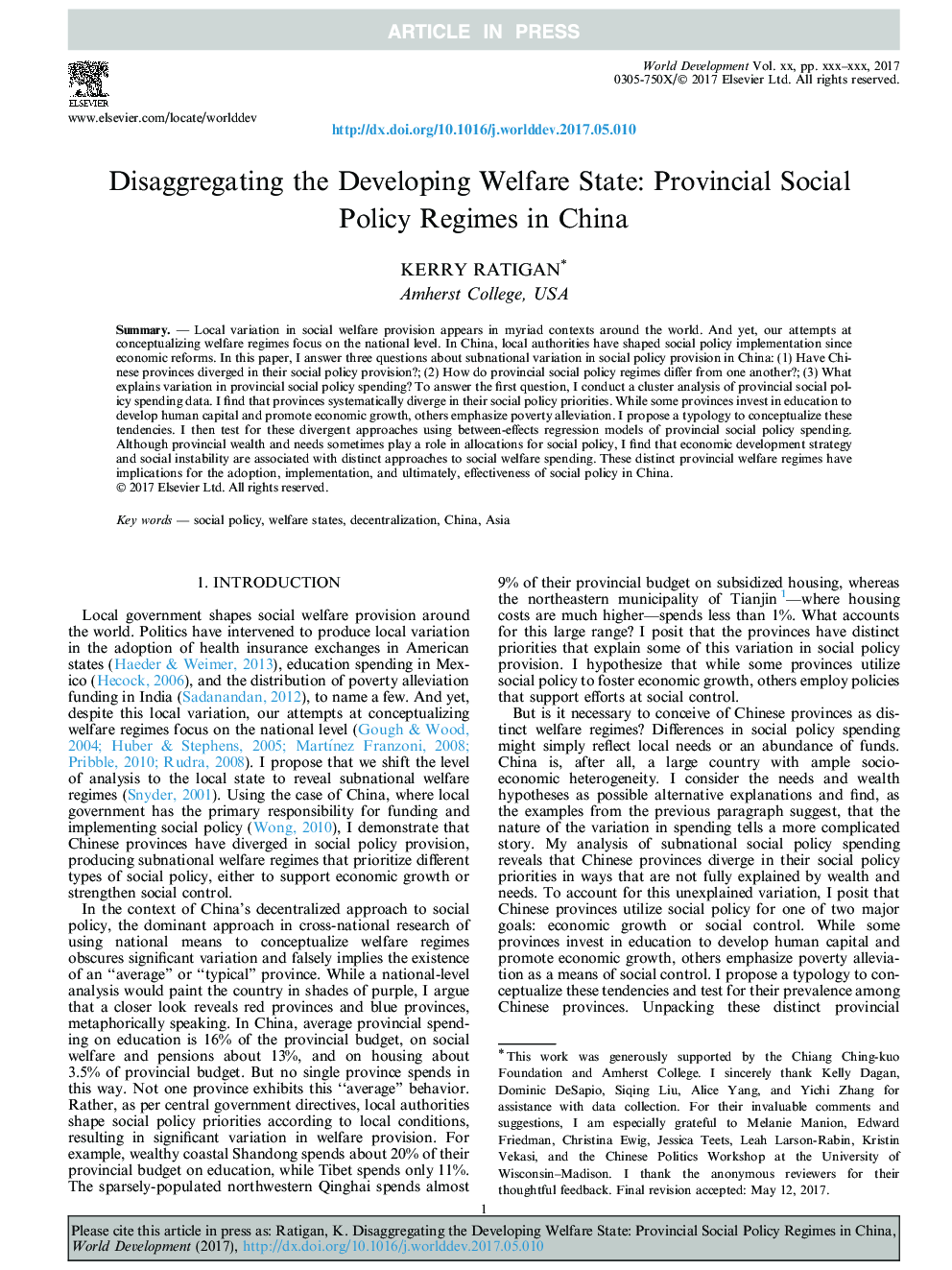| Article ID | Journal | Published Year | Pages | File Type |
|---|---|---|---|---|
| 5105157 | World Development | 2017 | 18 Pages |
Abstract
Local variation in social welfare provision appears in myriad contexts around the world. And yet, our attempts at conceptualizing welfare regimes focus on the national level. In China, local authorities have shaped social policy implementation since economic reforms. In this paper, I answer three questions about subnational variation in social policy provision in China: (1) Have Chinese provinces diverged in their social policy provision?; (2) How do provincial social policy regimes differ from one another?; (3) What explains variation in provincial social policy spending? To answer the first question, I conduct a cluster analysis of provincial social policy spending data. I find that provinces systematically diverge in their social policy priorities. While some provinces invest in education to develop human capital and promote economic growth, others emphasize poverty alleviation. I propose a typology to conceptualize these tendencies. I then test for these divergent approaches using between-effects regression models of provincial social policy spending. Although provincial wealth and needs sometimes play a role in allocations for social policy, I find that economic development strategy and social instability are associated with distinct approaches to social welfare spending. These distinct provincial welfare regimes have implications for the adoption, implementation, and ultimately, effectiveness of social policy in China.
Related Topics
Social Sciences and Humanities
Economics, Econometrics and Finance
Economics and Econometrics
Authors
Kerry Ratigan,
